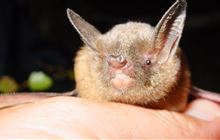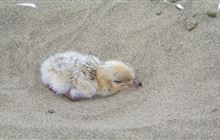Wildlife Act 1953
Introduction
The Wildlife Act is the main law that helps protect animals classed as wildlife, including some of New Zealand’s most endangered species. The Act does this by controlling how people interact with wildlife.“Wildlife” species protected by the Act
The Wildlife Act covers all native birds, bats, frogs, and reptiles, including those that visit New Zealand such as godwits and sea turtles. It also covers some native invertebrates and marine species.
In total, it currently covers over 900 native species, including:
- 394 birds
- 3 bats
- 3 frogs
- 133 reptiles
- 44 insects, 3 spiders and 24 snails
- 9 marine fish
- about 300 corals.
It also covers most introduced birds, mammals, reptiles and amphibians that are living in the wild in New Zealand, currently a total of 71 species.
It does not cover any of the following.
- Whales, dolphins, seals, and sea lions. These are protected under the Marine Mammals Protection Act 1978.
- Freshwater fish.
- Plants.
- Rabbits and hares.
- Introduced animals that might be found in zoos, kept in homes as pets, or on farms, but are not found in the wild, for example, zebra, guinea pigs, llama, ostrich.
- Domestic mammals and birds such as cattle, cats and turkeys, except for those that are living in the wild.
- Deer, tahr, chamois, feral goats, and feral pigs. These are managed under the Wild Animal Control Act 1977.
The history of the Wildlife Act
In 1953 the Wildlife Act replaced an Act from 1921 that had evolved from Acts in the late 1800s.
These early Acts enabled what were known as “Acclimatisation Societies” to regulate the hunting of game species. They gradually protected native species from hunting as people became concerned about them. The first native species to be protected throughout New Zealand in the 1800s were tūī, white heron, crested grebe and huia.
View the full Wildlife Act 1953 on the New Zealand Legislation website
How are species protected?
The Act has a tiered system with different levels of protection depending on the species.
- Absolutely protected wildlife
- Wildlife with varying protection
- Unprotected wildlife
1. Absolutely protected wildlife
Today, the Wildlife Act absolutely protects almost all native species that are classified as wildlife.
If an animal is ‘absolutely protected’ it means that without a permit from DOC it’s an offence to:
- catch, hunt or kill it
- buy, sell or possess it
- hold it in captivity
- release it
- export it.
The protection applies whether the animal is alive or dead, and to all or parts of it, for example, feathers, skin, bones, eggs.
The protection also applies at all times, on any land throughout New Zealand, and out to the limit of New Zealand’s exclusive economic zone. However, killing, or injuring seabirds and other absolutely protected marine wildlife during fishing is not an offence provided it is reported.
For absolutely protected wildlife, any permits that are issued must be consistent with their protection in the wild. DOC provides permits in response to requests from tangata whenua to use dead wildlife for cultural purposes, for example, feathers for korowai.
DOC also may give permits in response to applications from groups wanting to:
- manage and monitor wildlife in recovery programmes
- carry out research
- breed and release wildlife
- rehabilitate sick and injured wildlife
- have wildlife on display, or hold dead specimens for research, educational or advocacy purposes
- relocate wildlife that would be affected by development projects, for example, bats and lizards.
Examples of absolutely protected wildlife
kiwi, kea, blue duck/whio, tūī, fantail/pīwakawaka, terns, albatross/toroa, tuatara, jewelled gecko/moko kākāriki, Hochstetter’s frog/peketua, short-tailed bat/pekapeka, giant wētā/wētā punga, flax snails/pūpū harakeke, spotted black grouper, manta ray, basking sharks/mangō, sea turtles/honu, fan corals/pungatea.
2. Wildlife with varying protection
Some wildlife species are protected but not absolutely. They may be killed in specific circumstances. These species are listed in schedules within the Act.
Schedule 1
Birds listed in Schedule 1 are game birds. Game birds may be hunted, but only during the open season by people holding a license. Fish and Game Councils issue the licenses and manage the hunting through an annual notice which sets out such things as the timing of the open season, bag limits, and how the birds may be killed. Read more about game bird hunting.
Game birds included in Schedule 1
Five native species: shoveler/kuruwhengi, grey duck/pārera, pūkeko, paradise shelduck/pūtangitangi, and black swan.
Eight introduced species: mallard, pheasant, chukar, grey partridge, red-legged partridge, bobtail quail, brown quail, and California quail.
Schedule 2
Three species are listed in Schedule 2, for example, silvereye/tauhou. These species are protected. However, if they are causing damage to land or property, they may be controlled in that place by the landowner.
Schedule 3
Wildlife listed in Schedule 3 are protected but may be held, hunted, or killed if allowed by a notice. There are currently seven Schedule 3 notices. For example, notices enable Rakiura Māori to harvest tītī on the Tītī/Muttonbird Islands, and for harriers/kāhu, black shags, and little shags to be killed in specific circumstances.
On the Chatham Islands, where there is no Fish and Game Council, the birds that can be hunted as game are instead listed in Schedule 3 and DOC manages the hunting through a notice.
3. Unprotected wildlife
Schedule 5 lists wildlife species that are not protected. These include most introduced wildlife.
Some of these unprotected wildlife species cause harm, for example:
- as predators on threatened native species, for example, stoats, feral cats, hedgehogs
- by browsing native plants, for example, wallabies
- by causing damage to farms or orchards, for example, possums, Canada geese, rooks, or to people’s homes, for example, rats, mice
- by posing risks to people’s safety through bird strike at airports, for example, spur-winged plover, black-backed gulls.
Being unprotected means that the Act does not manage people’s interactions with them (except for ferrets, stoats, and weasels which may not be held, farmed, bred, or sold without a permit). These species can therefore be taken or controlled if and where needed. For example, by landowners and homeowners, by regional councils through regional pest management plans under the Biosecurity Act 1993, and by DOC in reserves and national parks.
Unprotected wildlife
Two native species: black-backed gulls and spur-winged plover.
Sixty introduced species, such as rats, hedgehogs, wallabies, possums, ferrets, stoats, magpies, starlings, Canada geese, rainbow skinks, southern bell frogs.
Crown ownership
The Crown owns all wildlife, except unprotected species.
When a person lawfully takes or kills wildlife listed in Schedules 1, 2, or 3, ownership passes to that person. But this does not apply to absolutely protected species, which the Crown continues to own, including their feathers, bones, skin and eggs, for example, specimens in museums.
Wildlife areas
The Wildlife Act also enables wildlife sanctuaries, wildlife refuges, and wildlife management reserves to be established. These can be on public conservation land, other Crown land, private land, or estuaries, with the consent of the relevant Minister or landowner. There are currently 20 around New Zealand that have been established under the Wildlife Act. They are located on islands, lakes, inlets, creeks, lagoons and river mouths.


